Download your PDF score!
By music teachers, for their students
| Title | Author | Set | Prices | ||
|---|---|---|---|---|---|
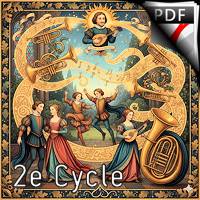
|
4 Dances |
Anthony Holborne |
Ensemble de cuivres |
14.90€ |
|

|
God Rest Ye Merry Gentlemen - Merry Christmas Mr. Bean |
Traditionnel Anglais |
Quatuor cuivre |
9.90€ |
|
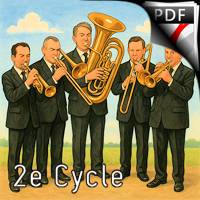
|
Alleluia - Brass ensemble |
Dietrich Buxtehude |
Ensemble de Cuivres |
14.90€ |
|
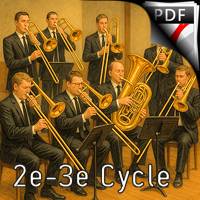
|
Medley Nougaro |
Jacques Datin, Nathaniel Adderley , Christian Chevallier |
Octuor de cuivres |
39.90€ |
|

|
Inaudita Ligeris |
Paul Lyonnaz |
sextuor |
39.90€ |
|
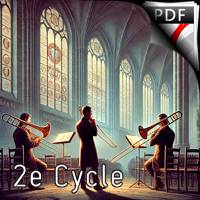
|
Equales |
Yves Bouillot |
Trio de Trombones |
7.90€ |
|
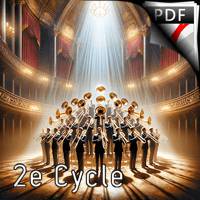
|
Trombone Choir |
Anton Bruckner |
Quintette de trombones |
14.90€ |
|
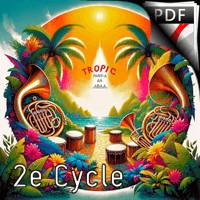
|
Tropic |
Marcel Chapuis |
Quintette de cuivres percussions |
14.90€ |
|
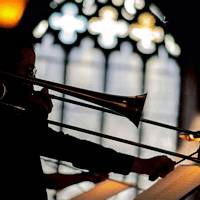
|
Hallelujah (Trombone Quintet) |
Leonard Cohen |
Quintette Trombone |
7.90€ |
|
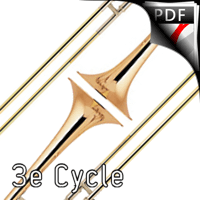
|
Concerto for 2 Trombones (Trombones and Concert Band) |
Pierre Pizon |
Trombones et Orchestre d'Harmonie |
39.90€ |
"Trombone" comes from the Italian word tromba (trumpet) plus the suffix -one (big). It literally means "big trumpet".
During the Renaissance, the trombone was called "sacqueboute", from the Old French "sacquer" and "bouter" meaning "to pull" and "to push".
The German "Posaune", long before the invention of the slide, could refer to a natural trumpet from the early 15th century.
Eventually, cities and noble courts sponsored trombone ensembles. By far the most famous and influential served the Duke of Burgundy. The main role of the trombone was to play the countertenor role in a dance orchestra. The sackbut was widely used throughout Europe, first appearing in the 15th century and then declining in most places by the mid to late 17th century. It was used at outdoor events, in concert and in liturgical settings. In addition to trumpeters, trombonists in German city-states were sometimes even employed as civil servants. As officials, these trombonists were often relegated as guards in the city towers but also announced the arrival of important figures. Their role resembled that of a military bugler and was used as a sign of wealth and strength in sixteenth-century German cities.
When the sackbut came back into common use in England in the 18th century, Italian music was so influential that the instrument became known as the "trombone," although in some countries the same name was used throughout its history, namely the Italian trombone and the German Posaune. The seventeenth-century trombone was built in slightly smaller dimensions than modern trombones, and had a more conical and less flared bell.
In the late baroque, Johann Sebastian Bach and George Friderich Handel used trombones on a few occasions. Bach used it in some of his cantatas, even writing for four trombones (with the very rare soprano trombone playing the cantus firmus, which would normally be played on the cornet à bouquin).Handel used it in the Death March of Saul, Samson, and Israel in Egypt, all of which were examples of a new oratorio style popular in the early 18th century. Separate score notations are rare. Handel, for example, had to import trombones from a royal court in Hanover, Germany, to England to perform one of his greatest compositions. Consequently, trombone scores were rarely given "solo" roles that could not be substituted by other instruments.
The construction of the trombone changed relatively little between the Baroque and Classical periods, the slightly more flared bell being the most obvious feature.
The first use of the trombone as an independent instrument in a symphony was in the Symphony in Eb (1807) by the Swedish composer Joachim Nicolas Eggert. However, Ludwig van Beethoven, who used it in the last movement of his Symphony No. 5 in C minor (1808), is the composer who used it most often in the symphony orchestra. Beethoven also used trombones in his Symphony No. 6 in F major ("Pastoral") and in his Symphony No. 9 ("Choral").
